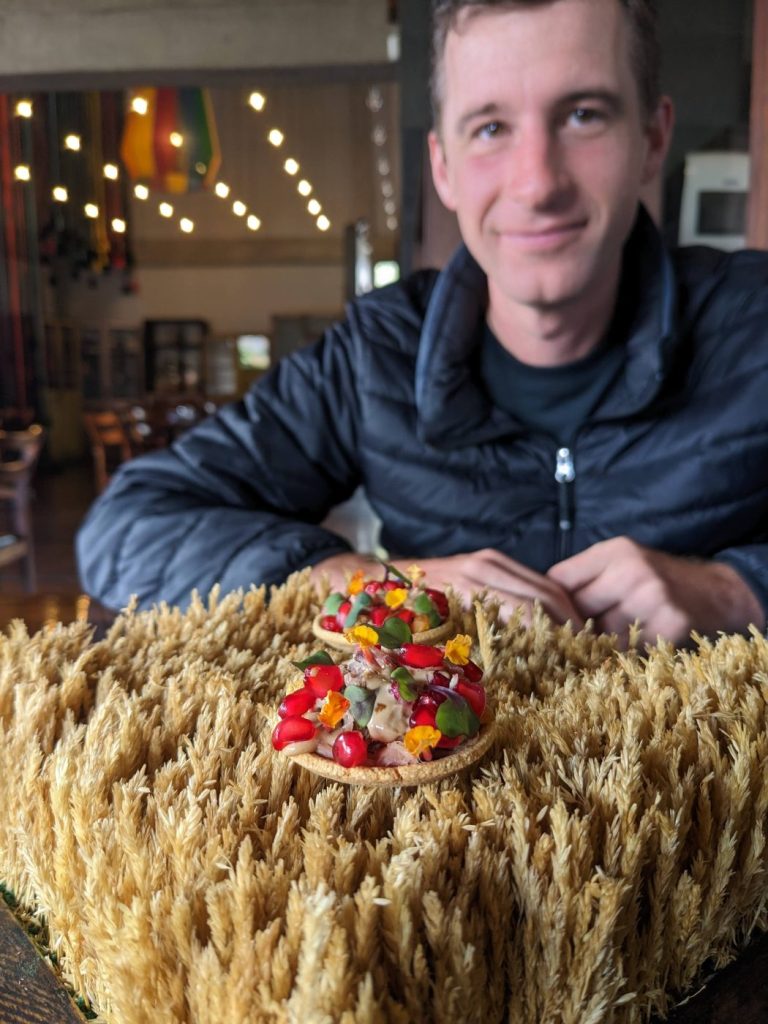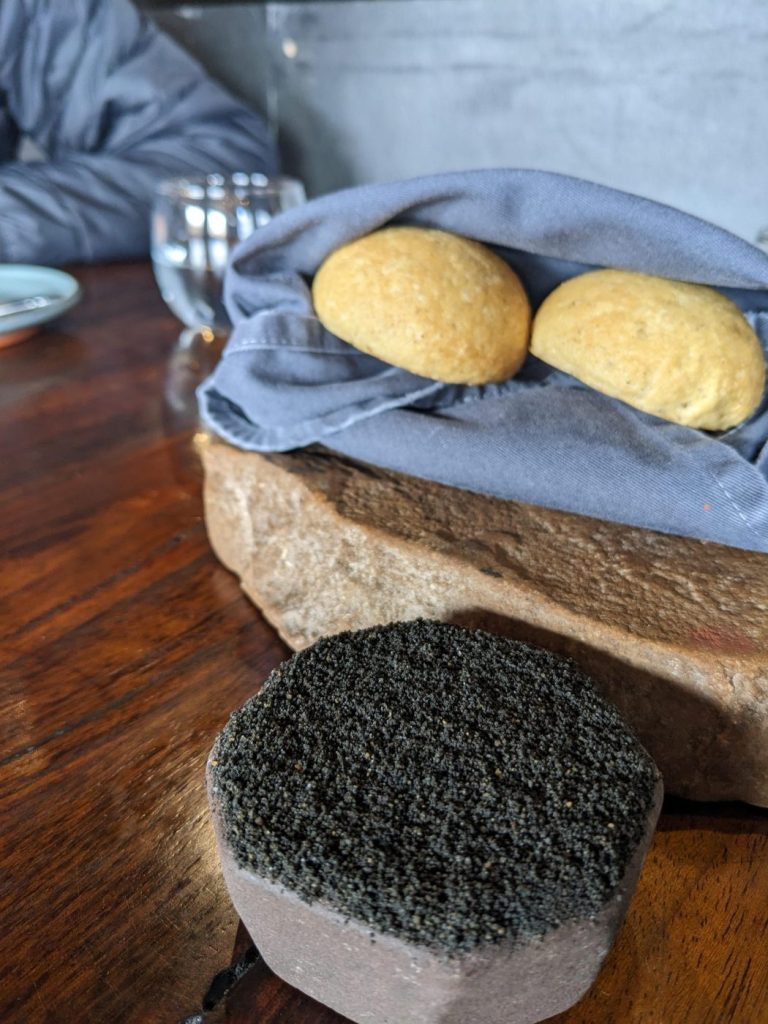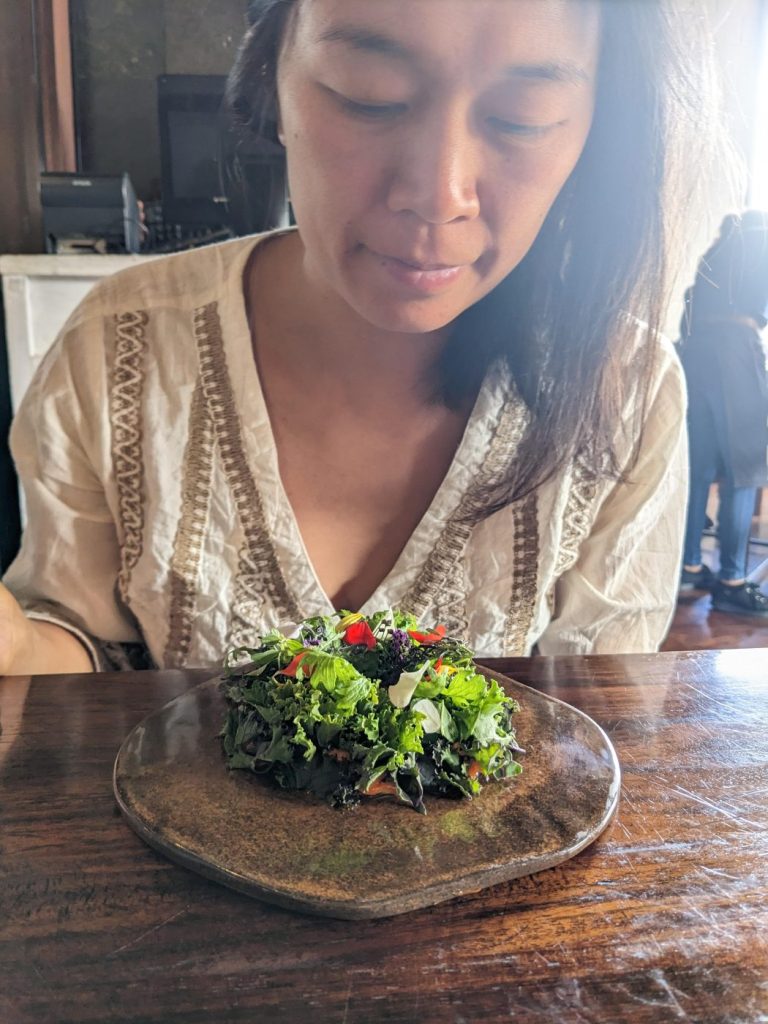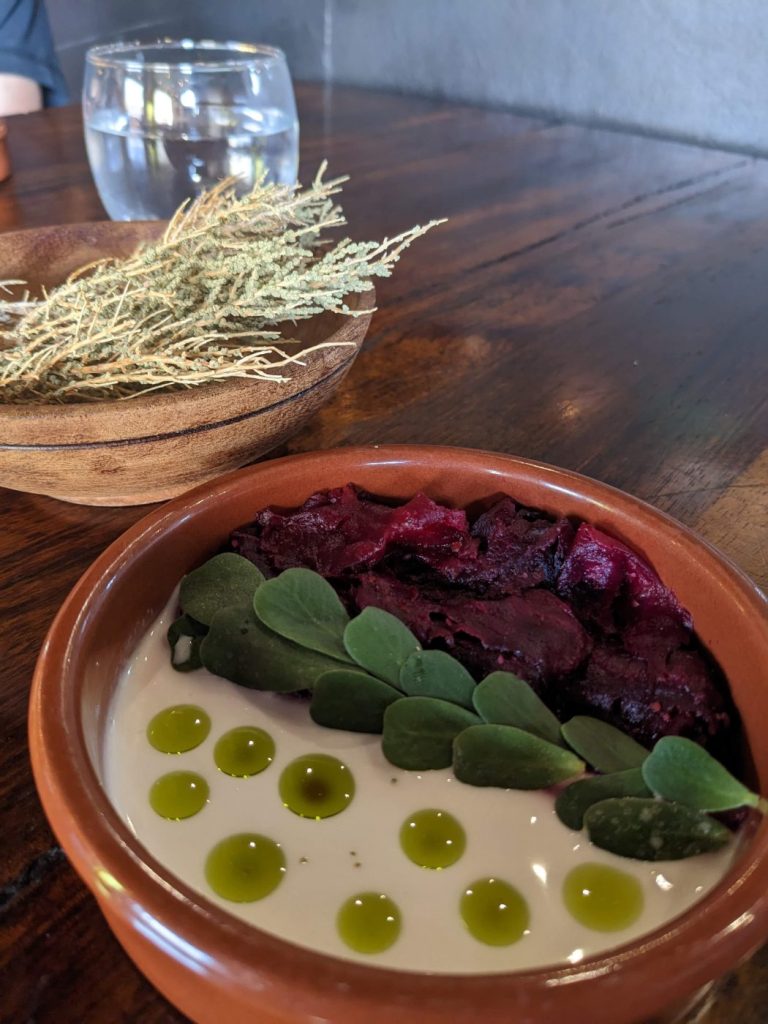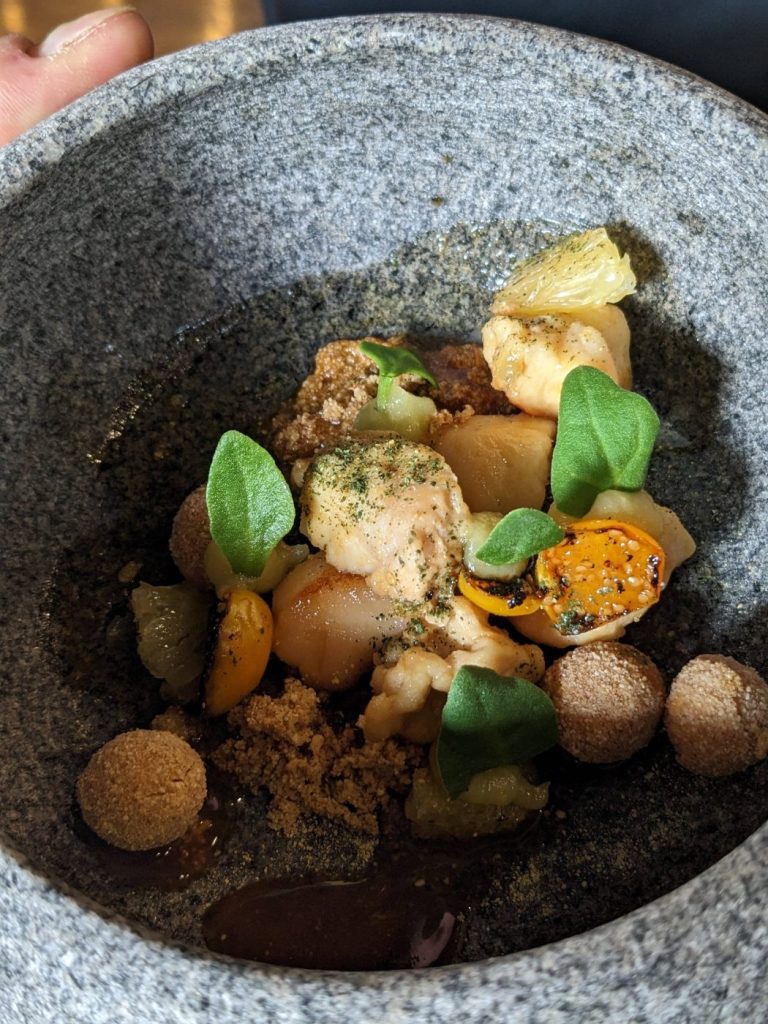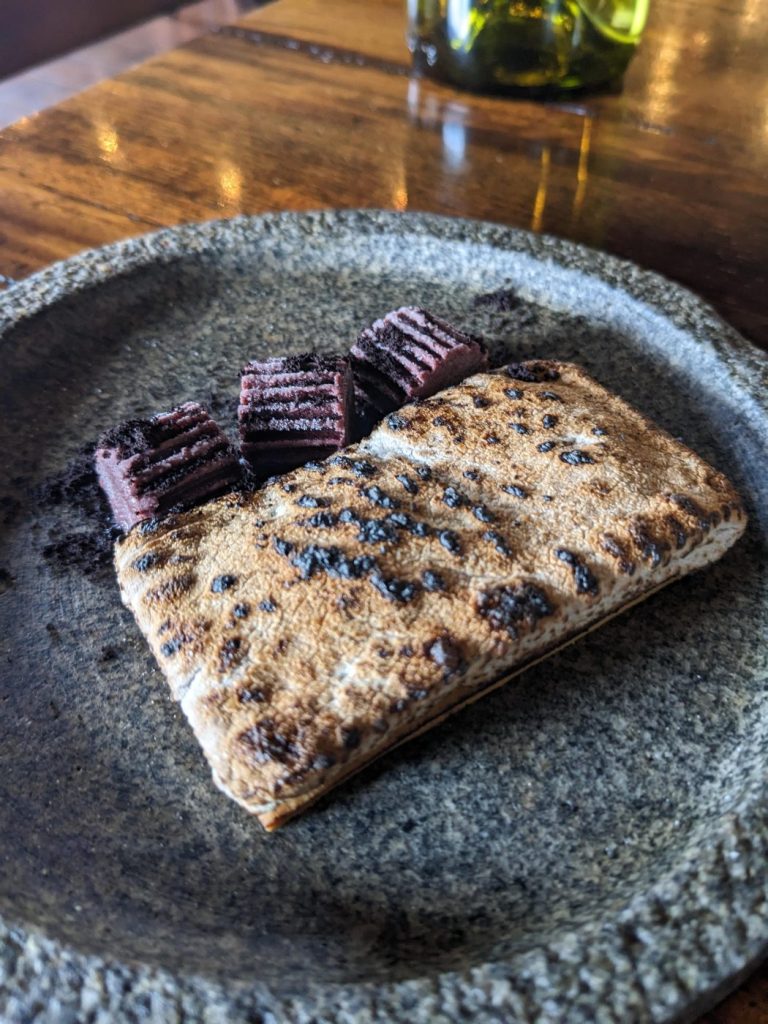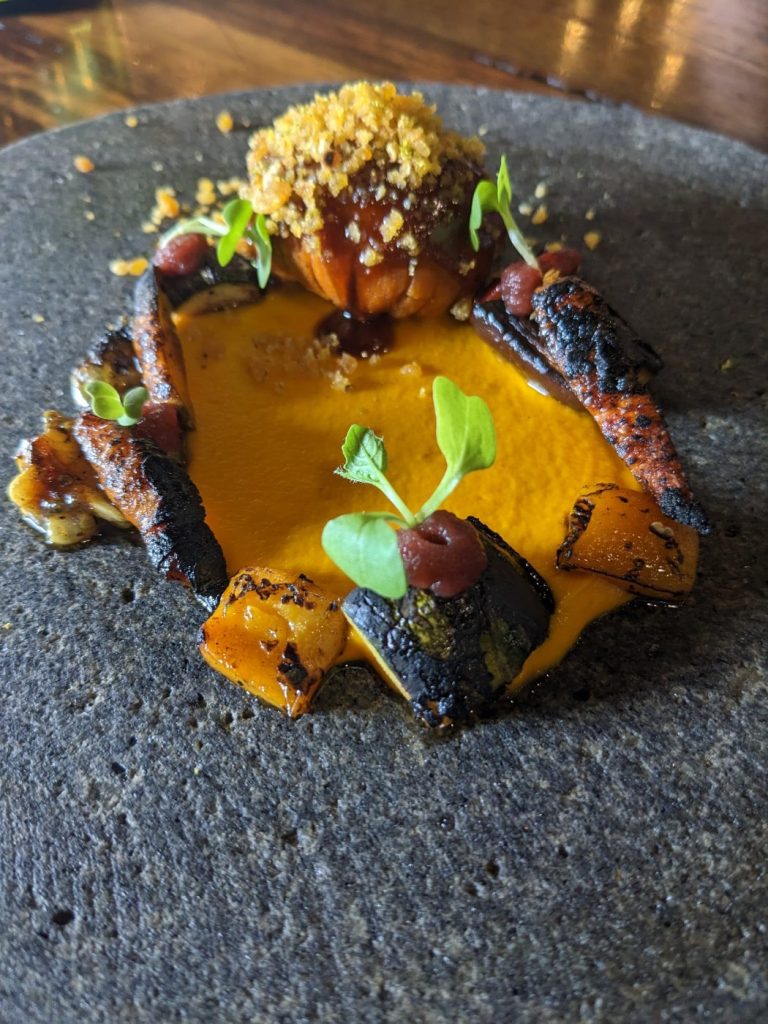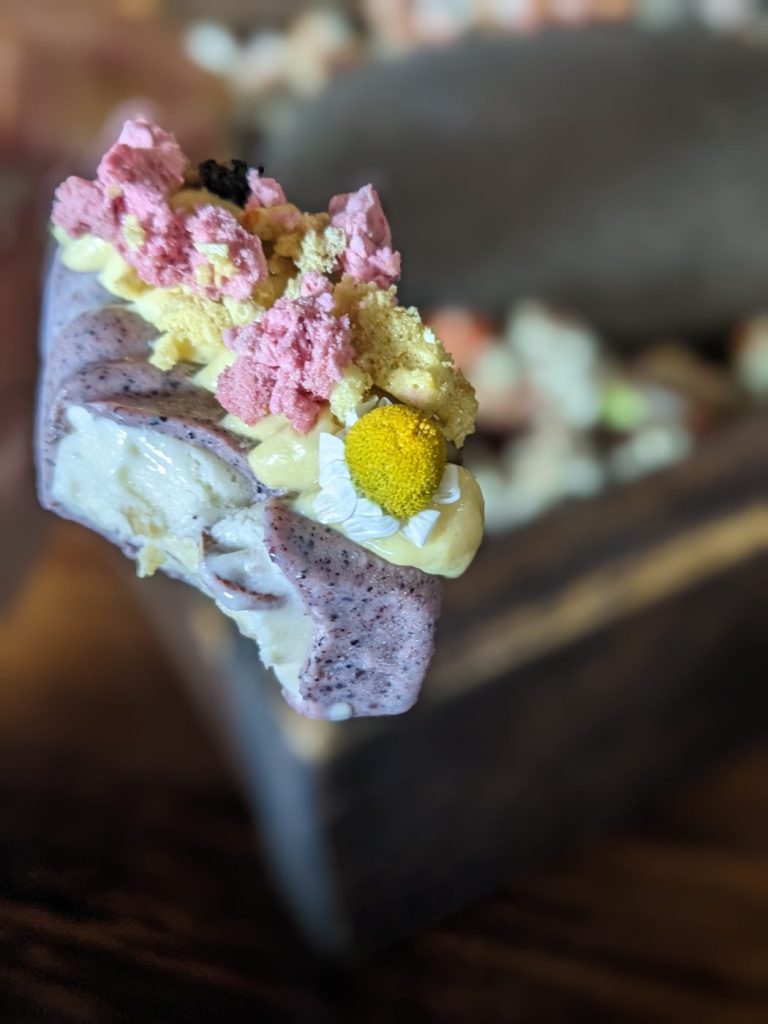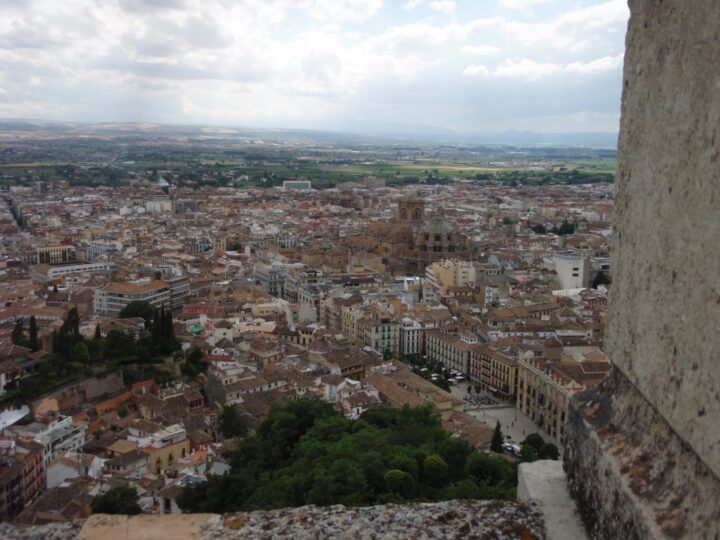5 Days in La Paz: Cholita Wrestling and an 11-Course Lunch
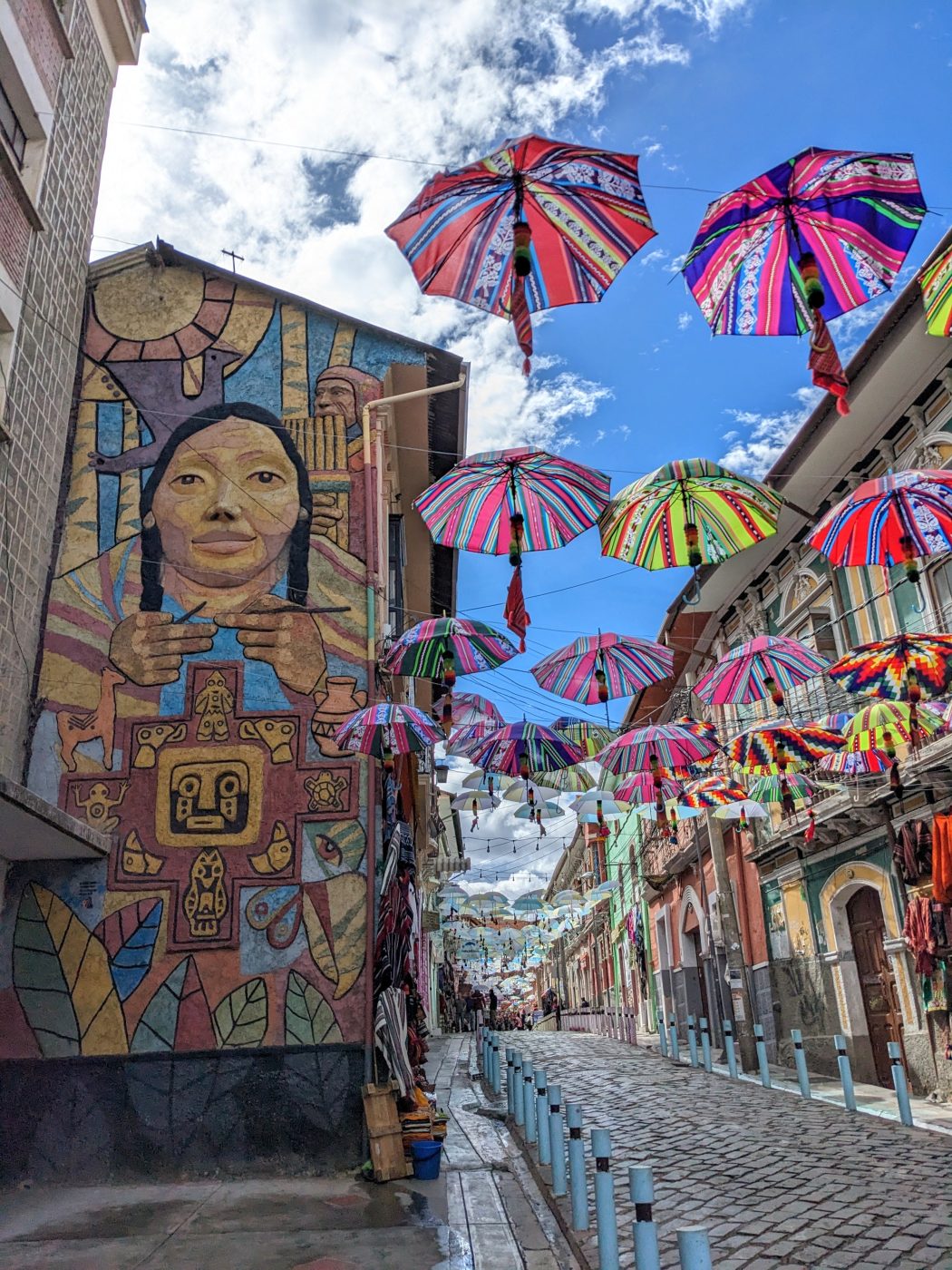
Highway to La Paz
To be honest, La Paz was not on my bucket list. I’m not a big city person. Everyone I met who grew up in La Paz seemed glad to be somewhere else. And at nearly 12,000 feet above sea level, it is the highest capital in the world and I imagined us cold and suffering from shortness of breath. (Those worries proved mostly baseless. It was certainly cooler than Cochabamba, but not cold. We started acclimating to the altitude a month ago, so it barely affected us.)
Given our lack of enthusiasm, we only gave ourselves five days. That might sound like a lot, but we were traveling for an entire year, so for us it was little more than a layover. In fact, we may have skipped La Paz entirely if not for the international airport. We were scheduled to depart for Colombia after five whole weeks backpacking through this mesmerizing country.
Nevertheless, we found the route from Cochabamba to La Paz fascinating. Seated in front, on the upper deck, we rode like pilots manning our cockpit. Our eyes stayed glued to the window as we rumbled through mist shrouded slopes and simple indigenous homesteads. It was like traveling through a social studies textbook.
As we approached our destination, the view of the city as we descended into the canyon filled us with awe.
The topography of La Paz is a little like the top of a bathroom vanity. The center fills a vast sink bowl, covering its surface like the hardened toothpaste my three boys fail to wipe away night after night. Surrounding this, forming the countertop, is the flat Altiplano. The city sprawls out over the flats for miles in endless orange brick shops and dwellings (like all the toothpaste that misses the sink, to overextend the metaphor). This higher, flatter part of the city is called El Alto, and it’s noticeably colder than down below. In a final majestic flourish, the Andes rise up on one side like a jagged wall.
Zipping around the rim of the canyon, overlooking the vast concave cityscape, I realized La Paz might be more interesting than I first imagined.
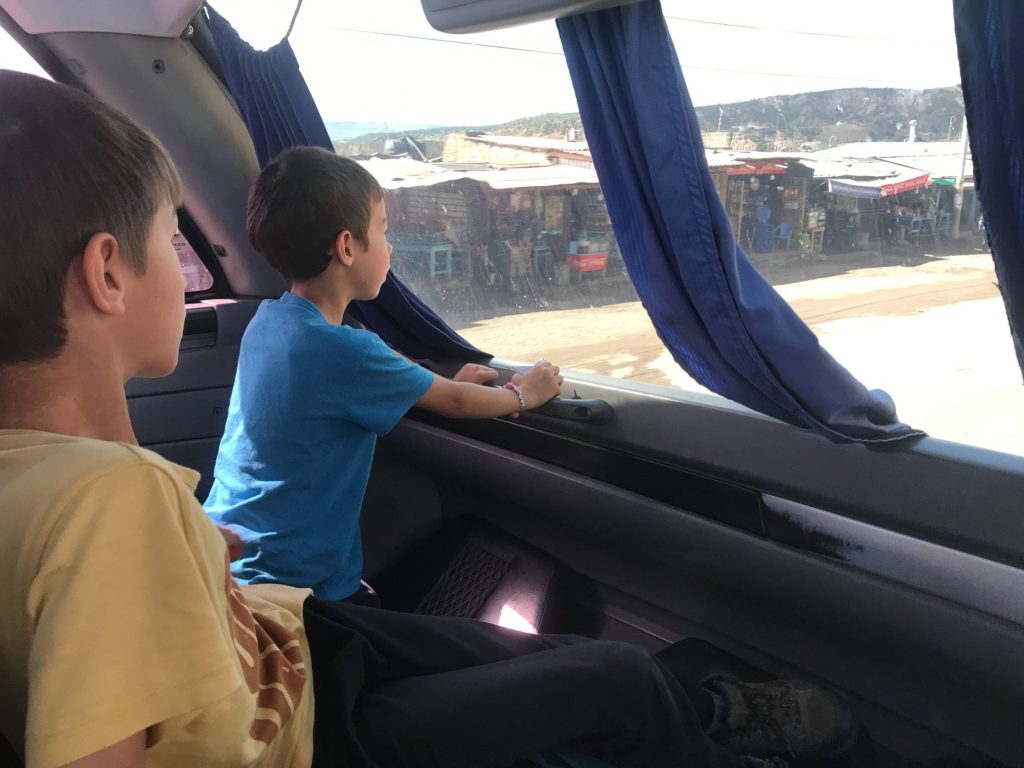
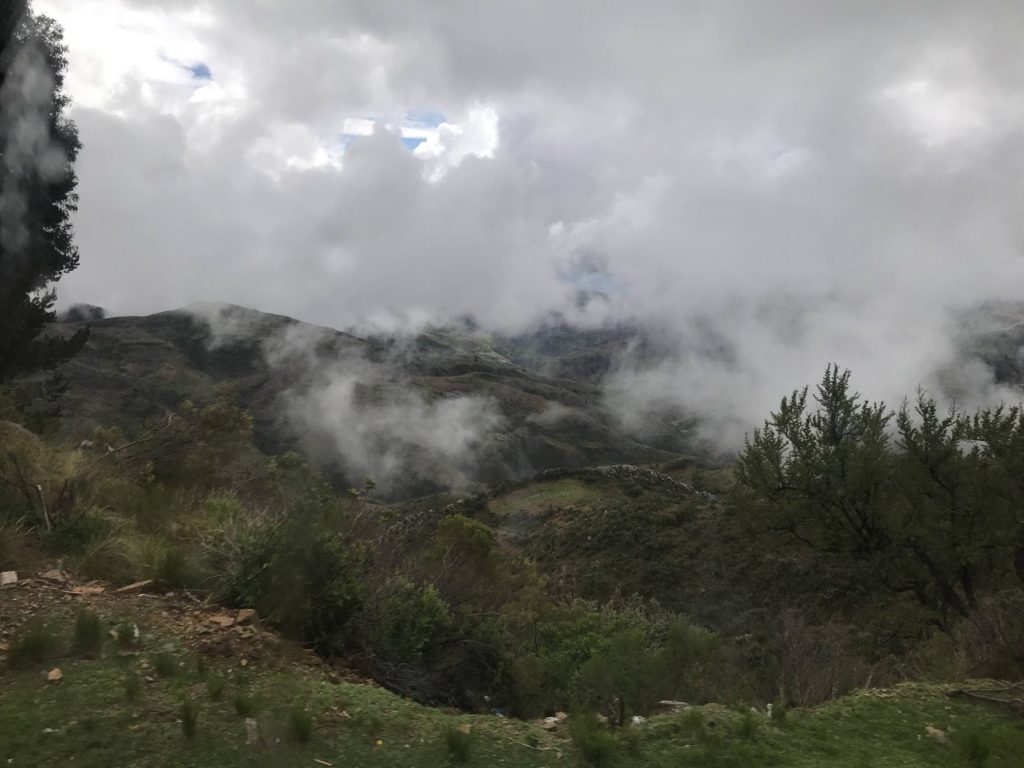
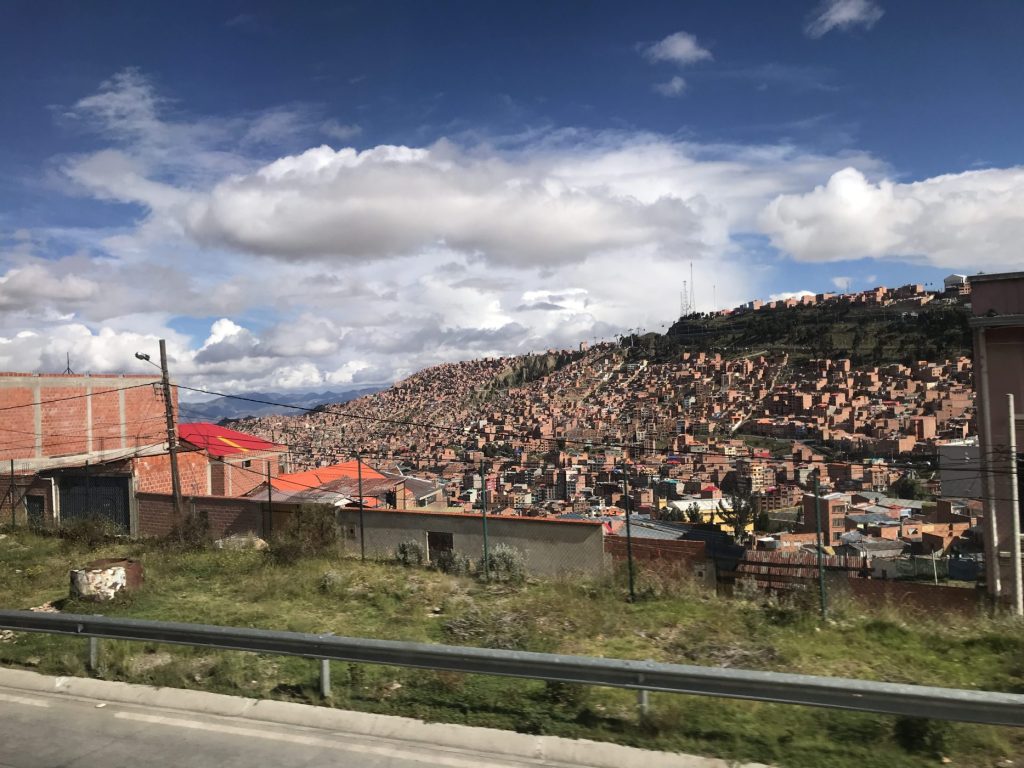
Day 1 – The Hobbit Door
Our boutique hotel, La Posada de Abuela, was in the middle of the famous Witches Market. We disembarked at the bus station and hailed a cab. The taxi inched its way through increasingly narrow streets crowded with a chaotic puzzle of vehicles and pedestrians.
At last, our driver dropped us off at a carnivalesque cobblestone avenue. Overhead was a canopy of rainbow colored umbrellas strung up from the rooftops for no practical purpose other than pleasing tourists. Painted murals adorned the sides of buildings. Souvenir shops, travel agencies and international restaurants dominated the storefronts.
We entered our hotel room and it was as inviting as the pictures in the listing. The apartment-style quarters had a kitchen and two bedrooms. Just right for our family of five. Everything was perfect except for one absurd detail. The main door barely came up to my shoulder.
For a brief moment I was concerned that the entire apartment was four feet tall. I couldn’t dismiss this odd possibility out of hand. Why? Because, three weeks prior, in the small village of Mizque, I scoured the local market for new shoes. Despite there being a handful of stalls with racks of shoes, nobody had larger than a U.S. size seven. I’m a size twelve, so none of them came even close to fitting. I made peace with the fact that Bolivia doesn’t always cater to a six foot tall American with big feet. Thankfully, in this case, the door was the only thing not to scale.
We capped off the night with dinner. La Paz is a surprisingly cosmopolitan place. That is to say, after traveling through the rest of Bolivia and struggling to find size twelve shoes, shaving cream and baking ingredients, it was a shock to spot an English pub on the corner. There were restaurants of every ethnicity: Indian, Cuban, Moroccan, Irish, just to name a few. Many locals spoke fluent English. Signs were posted in multiple languages. More than a few were written in Hebrew, strangely enough.
We turned down a pedestrian alley. The English Pub sounded good. But we came all this way to immerse ourselves in Latin American culture, so we decided to pass. Next, we walked by an Indian restaurant (Liuan was tempted, but again we passed). Finally, we settled on YATI Restaurant Cafe & Bar. It was cozy, not brazenly foreign, but served food typical of an upscale American suburb. I think I might have gotten a Tex-Mex style burrito.
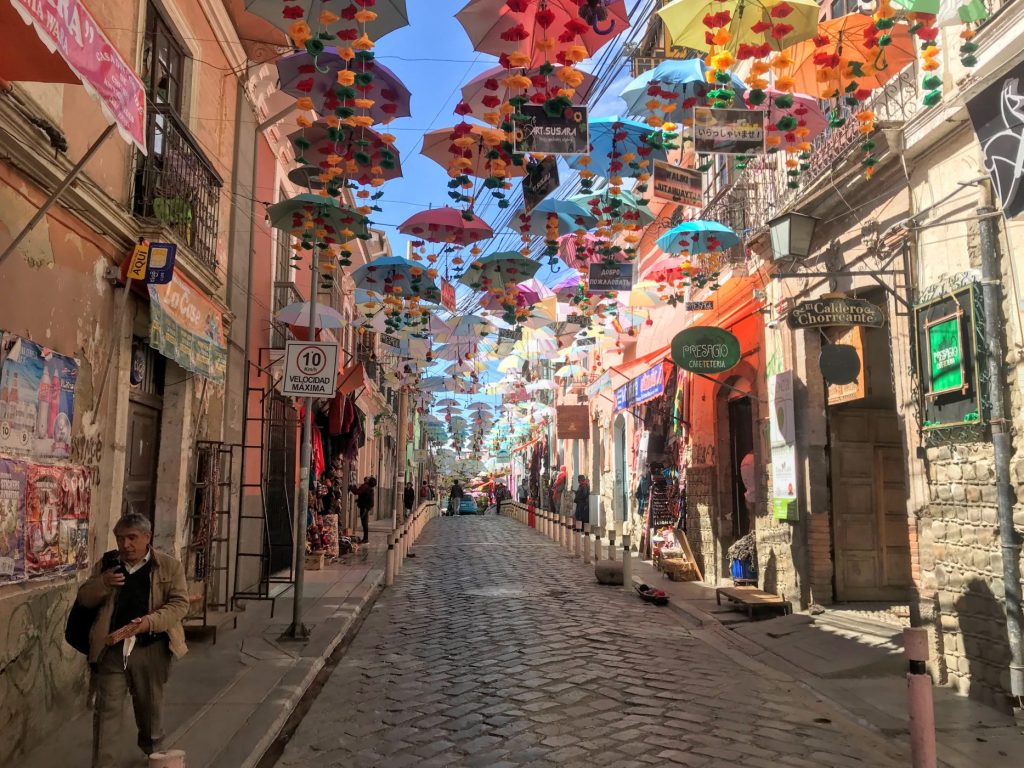
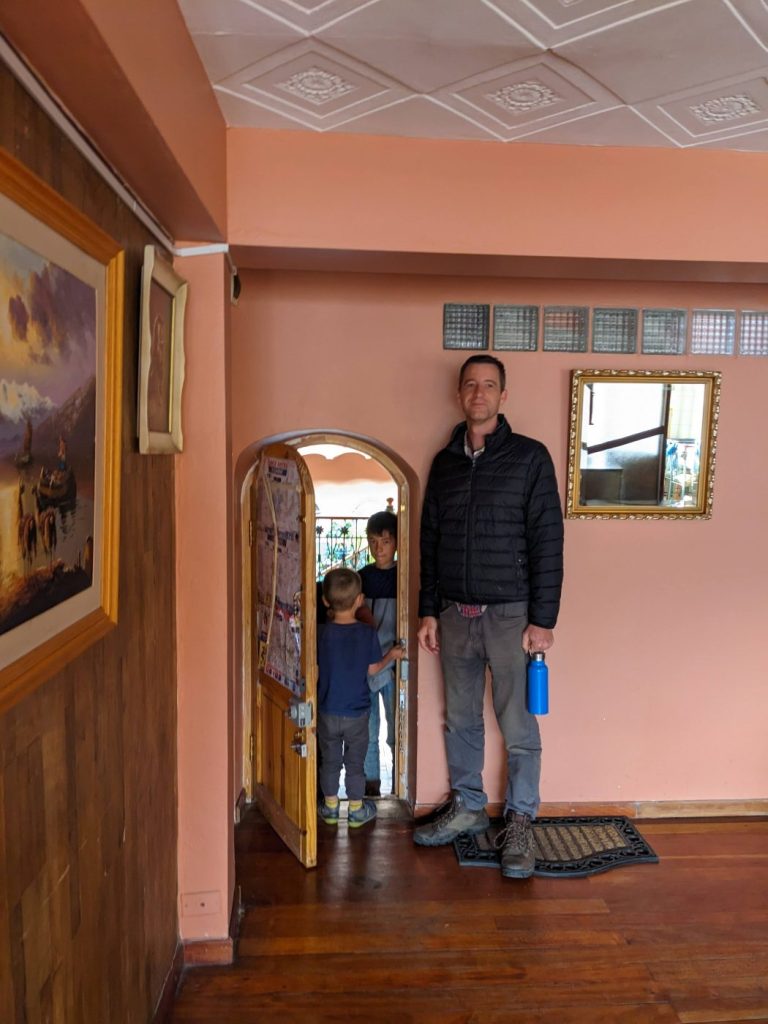
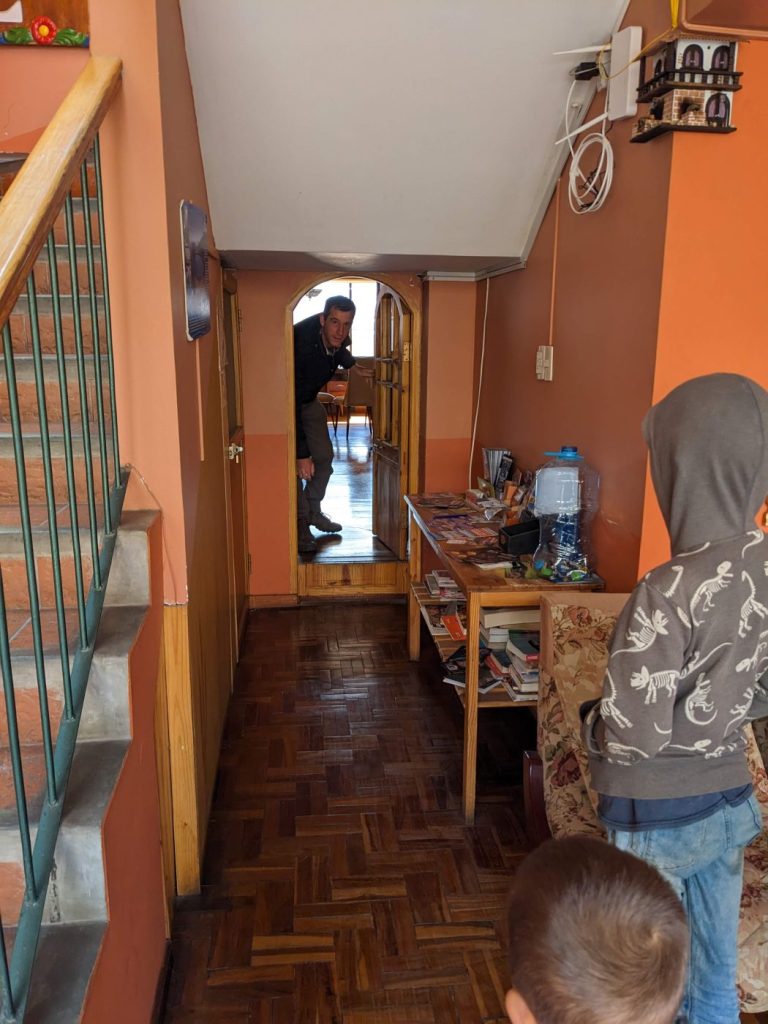
Day 2 – Does This Guy Know Us?
The next day we hit the Teleferico, or cable cars. These are a form of public transportation, not a tourist gimmick like the umbrellas. In fact, most of the people we shared a car with were local. They had various lines designated by color, just like a light rail metro. It was quicker than driving the narrow, crowded, and sometimes very inclined streets.
It was also a lovely way to spend a morning as a tourist. We hopped on the red line, being the closest to our hotel. Our glass bubble lifted us up and out of the sink bowl. Down below, we observed a giant cometary that looked rather like rows of hardware organizers. We feasted our eyes on a brightly colored neighborhood clinging to the side of the cliff.
Next, we transferred to the blue line which sent us far out over El Alto, the higher, flatter part of the city. We amused ourselves by spying on people doing laundry and other personal business in their open courtyards.
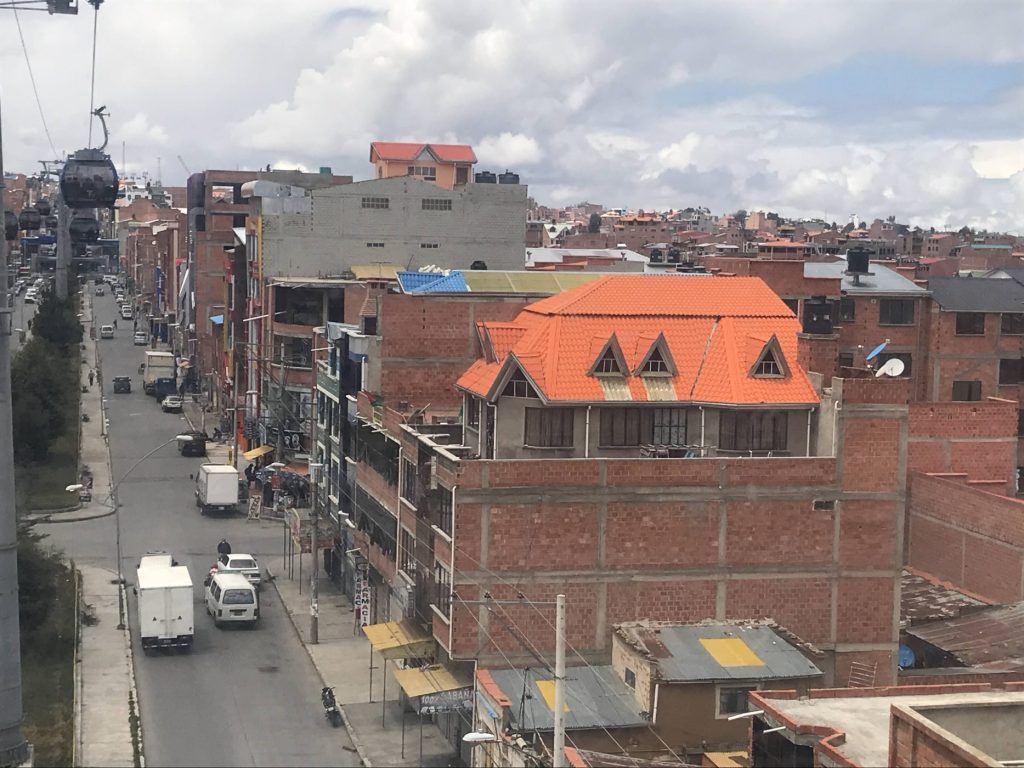
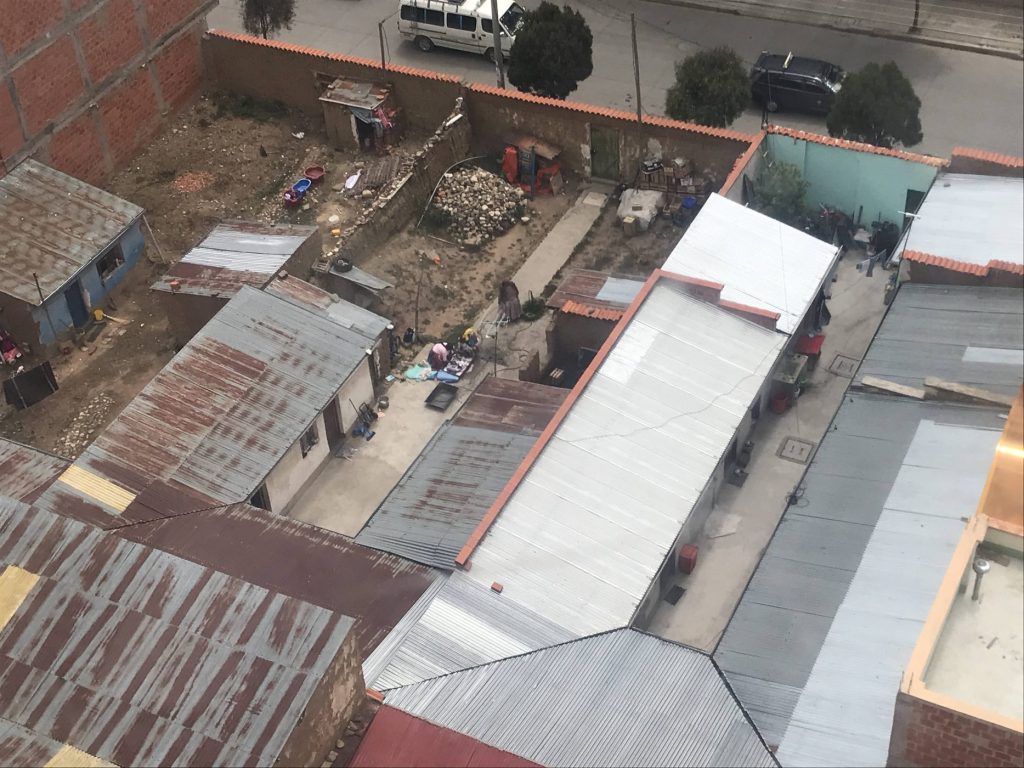
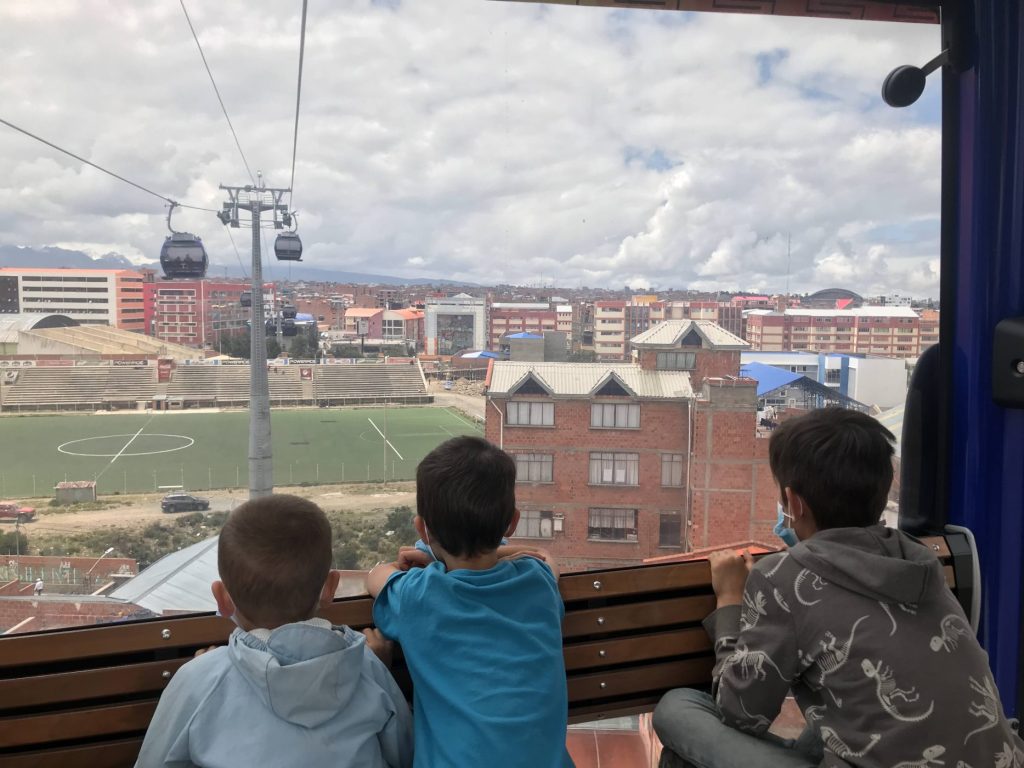
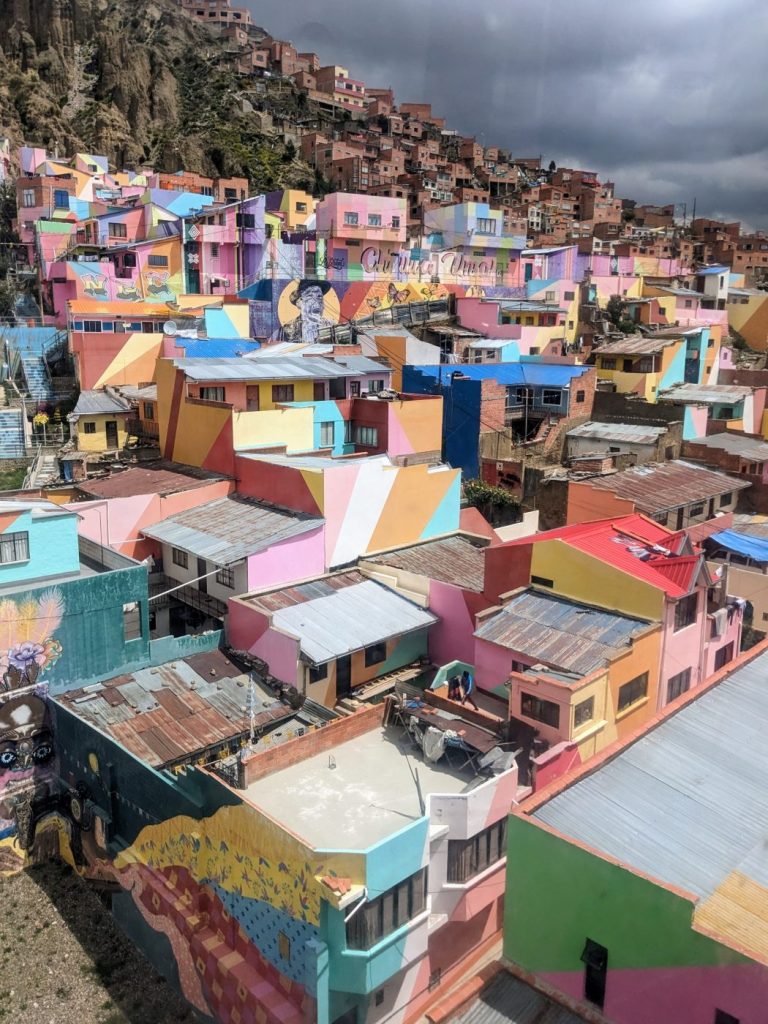
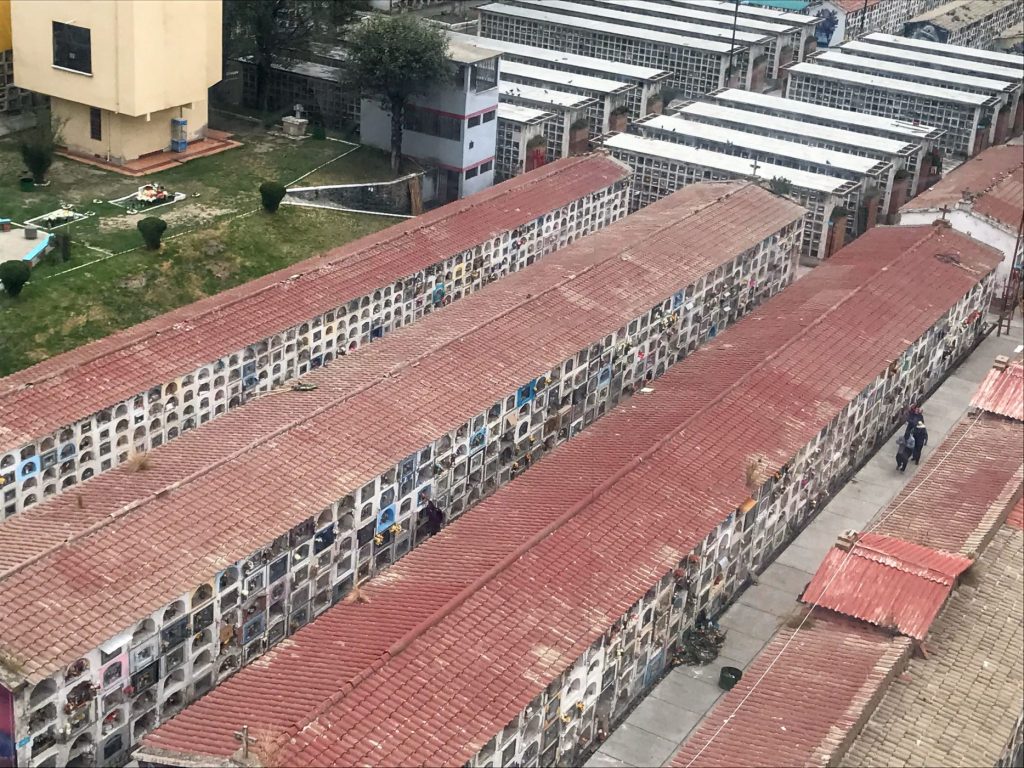
After a homemade dinner, we went out and perused the souvenir shops. Advertising for cholita wrestling caught our eye.
A cholita is an indigenous woman of Quechua or Aymara descent. The word describes a short stout woman dressed in a colorful shawl and skirt, sporting a small black bowler hat. In a country where the majority of the population is indigenous, they are a common sight in any crowd. As Jada Yuan wrote in the New York Times, “At times, the streets [are] packed with so many bulbous wool hats — round on top, short of brim — it [feels] like wading through a river of female Charlie Chaplins.”
A woman hawking tickets knew how to sniff out a curious tourist. She homed in for the sale.
Liuan haggled her down to half the original price with discounts for the children. When everyone was satisfied, she took down our names in her notebook and took photos of our passports with her phone. We’d pay once we got on the bus.
Afterwards, I was hankering for a snack: something baked, like a cookie or brownie. In contrast to the rest of Bolivia, fulfilling such a desire seemed within reach. We walked several blocks but came up empty. I joked that we would probably just end up back at YATI.
A block later, we turned a corner and there was YATI. A young man posted out front was actively cajoling passersby into his restaurant, a common thing to see in Latin America.
“Hey, I know you!” he called out to us. Oldest trick in the book, I thought. I didn’t remember him from yesterday. “Come in,” he urged and started listing their most enticing dishes.
“We’re just looking for desert. A brownie or cookie.”
“Yes, of course. Come in!” he ushered us through the door before we could consider other options.
While they warmed my brownie, I made small talk with the guy who sucked us in, and he was actually pretty interesting. I learned that he lived abroad for a while. His English was fluent and he was proficient in several other languages. He seemed like a real go-getter. In a different economy he’d probably be a business major or perhaps an influencer.
The conversation turned to our near-term itinerary. Sheepishly, I told him we just bought tickets for cholita wrestling (it felt a bit exploitative for us to be witnessing this). His face lit up, “Ah yes, I’ll be on your bus tomorrow!”
O….K. I was absolutely certain I had never met the guy. We just booked fifteen minutes ago with a random lady in another part of the neighborhood. There had to be a dozen or more tourist companies with their own bus. How could he possibly know what bus we would be on?
“See you tomorrow,” he said as we left with our warm brownie. “Yeah, sure, see ya,” I said.
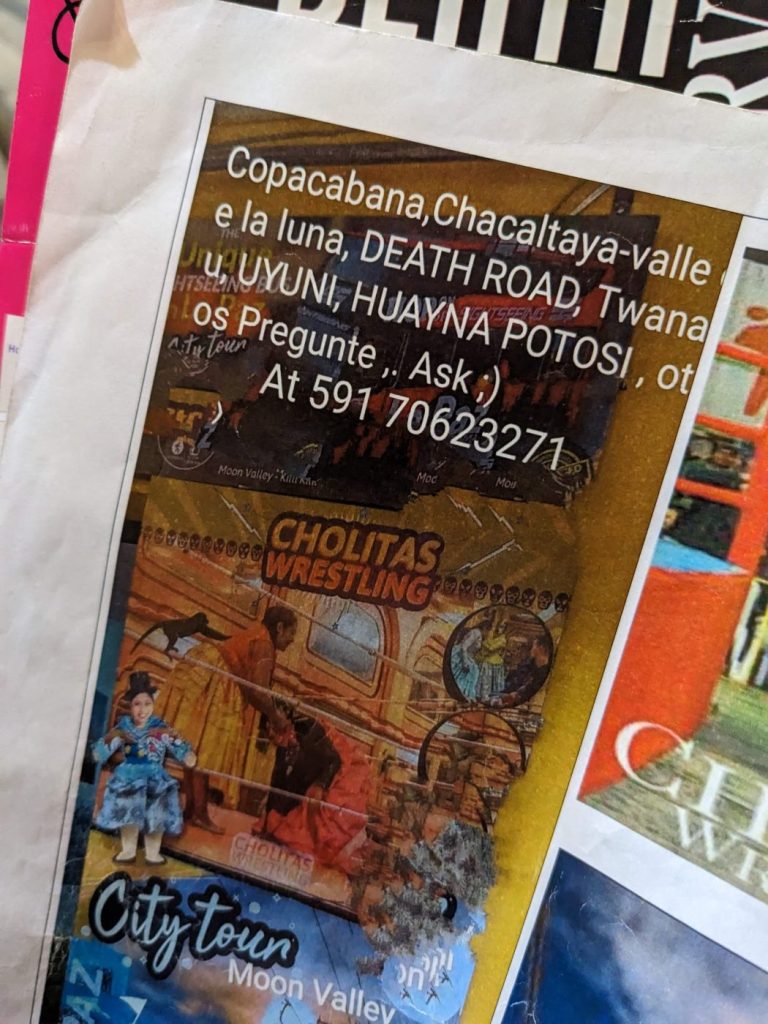
Day 3 – Laying the Smack Down (Cholita Style)
Our day started with another round of cable cars. There’s probably more to La Paz than cable cars—basilicas, museums, miradores, etc.—but it was cheap, relaxing, and entertained the boys. Don’t mess with success, as they say.
The purple line took us to the upper rim of the sink bowl. We transferred to the silver and yellow lines which skirted around the rim and allowed us to overlook the entire city is if it were our snow globe. Then we descended back down and floated under bridges and between skyscrapers through the heart of the city on the “celeste” (sky blue) and white lines.
When evening came, we waited for our shuttle at the designated spot with a gaggle of tourists. The bus to cholita wrestling pulled up and an older woman took roll call. After running through the list of names, she asked if she missed anyone. We timidly raised our hands. After probing the matter a bit, the tour guide concluded that we were not part of her group. The bus left us behind in a black cloud of smoke.
We were a bit anxious, of course. Liuan called the woman who sold us the tickets. She claimed they were just running late.
At last, another bus arrived. A young twenty-something cholita hopped off the little shuttle bus with a clipboard. She looked harried and flustered. After checking us off the list and collecting our fee, we got on.
The shuttle engine-braked its way down the steep street as we breathed in its exhaust. It stopped several blocks later to pick up another group. Our friend from YATI, the young guy who promised he’d see us on the bus, got on, full of energy. “Hey!” he greeted us warmly and started to chat with us like we were old friends. He put in his time with us and then moved on to other customers, chatting them up in Spanish, English, German, and whatever bits he knew of Dutch and so on.
After a long meandering journey up and into El Alto, we arrived at a large warehouse. In the center was a no-frills fighting ring. Bleachers and rows of metal folding chairs encircled it on four sides. They herded us to our cold seats, giving each a can of Coke.
The show was in the tradition of professional wrestling, or more specifically, lucha libre. But it came with its own cultural twist. More than half of the wrestlers were women.
The warmup act was typical lucha libre: two men in masks. After that, there were no matches without women. Two middle aged cholitas entered the ring next.
They performed athletic feats that would be difficult for anyone, much less at forty or fifty and wearing a long skirt. They slammed each other, smashed folding chairs and metal trash cans over each other’s backs, and in a move that made my 40-year-old self wince, one jumped off the ropes onto her opponent and the referee landing on a solid concrete floor. Impressive.
Then came the grand finale—man vs. woman. The woman was none other than our bus guide, the young twenty-something cholita. Apparently in Bolivia, being the star of the show doesn’t preclude you from herding tourists.
The match felt icky to watch (especially in the company of three little boys). Thankfully, the woman wins in the end. But that meant, according to the standard wrestling plot line, they spent most of the match trying to convince you she was going to lose. The evil woman-beating man battered and bludgeoned our poor tour guide to an inch of her life before she made her heroic comeback and exacted sweet revenge.
Several decades ago, this unusual exhibition began as a way for victims of domestic abuse to blow off steam. The women started out wearing the same costumes, including the skintight mask, as the men. But someone figured out that performing in their street clothes—the traditional skirts and bowler hats—sold more tickets. It was the secret hack to the tourist’s brain and wallet. They never looked back.
On the return shuttle, the star of the show was once more at the head of the bus making sure everyone was seated. At this point it was awkward—treating her like our tour guide after watching her kick a grown man’s ass. It made you want to be extra polite.
Liuan and I speculated, only half joking, that she probably still had to go back and help put away the folding chairs. That’s life in Bolivia, I guess.
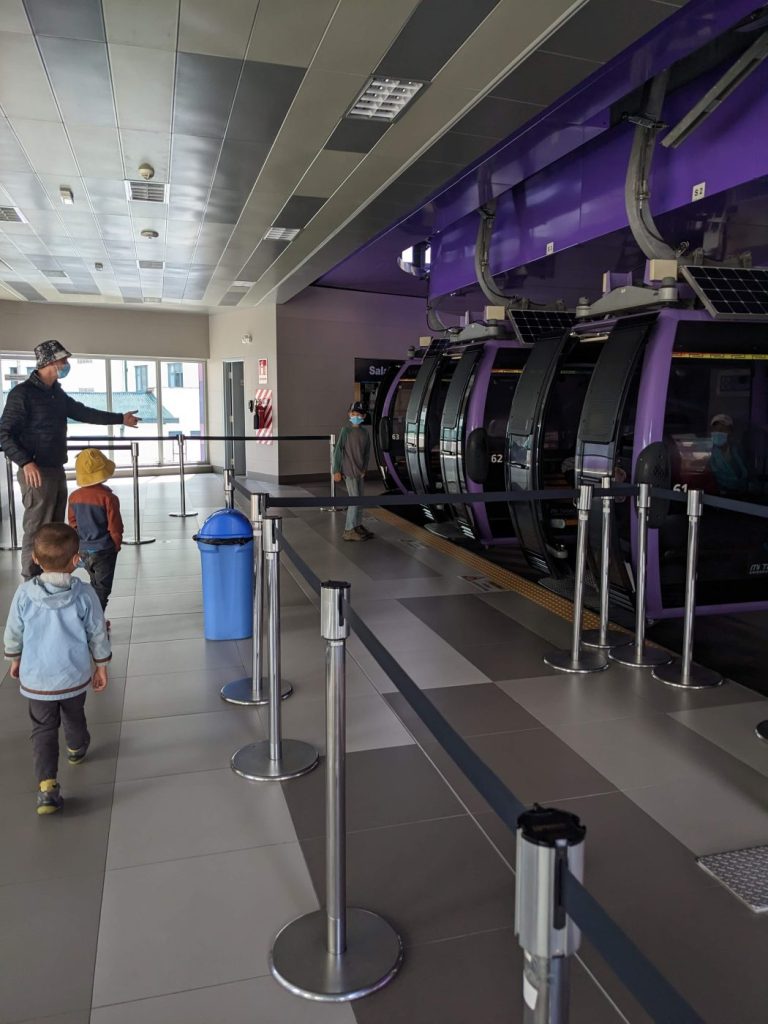
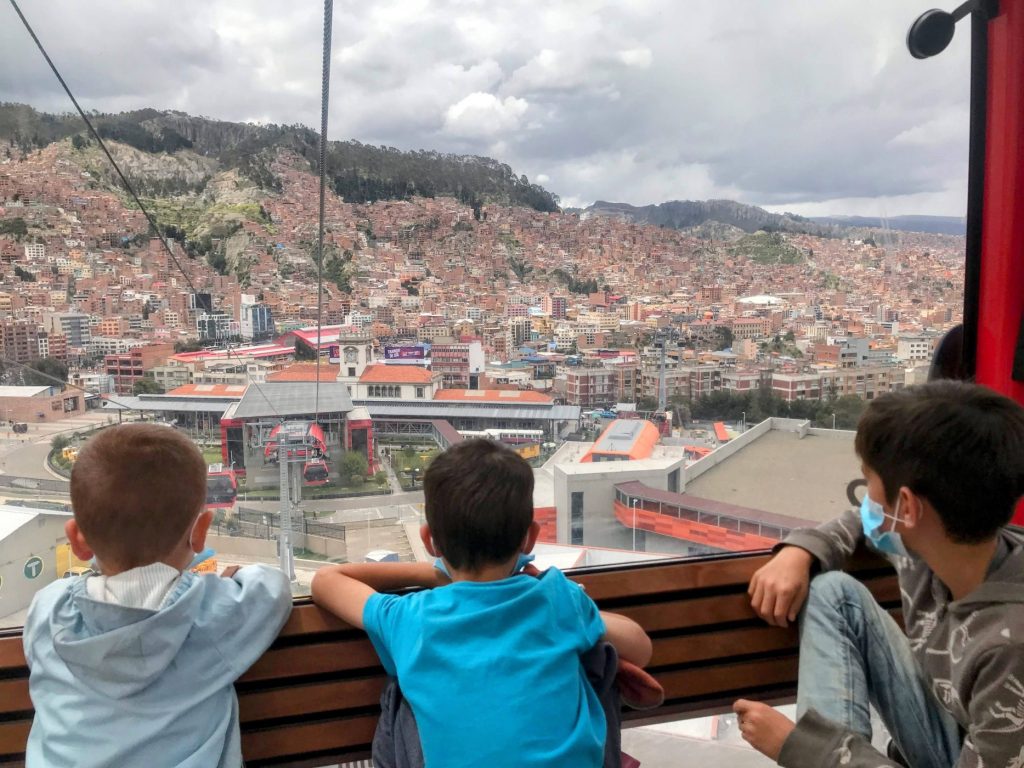
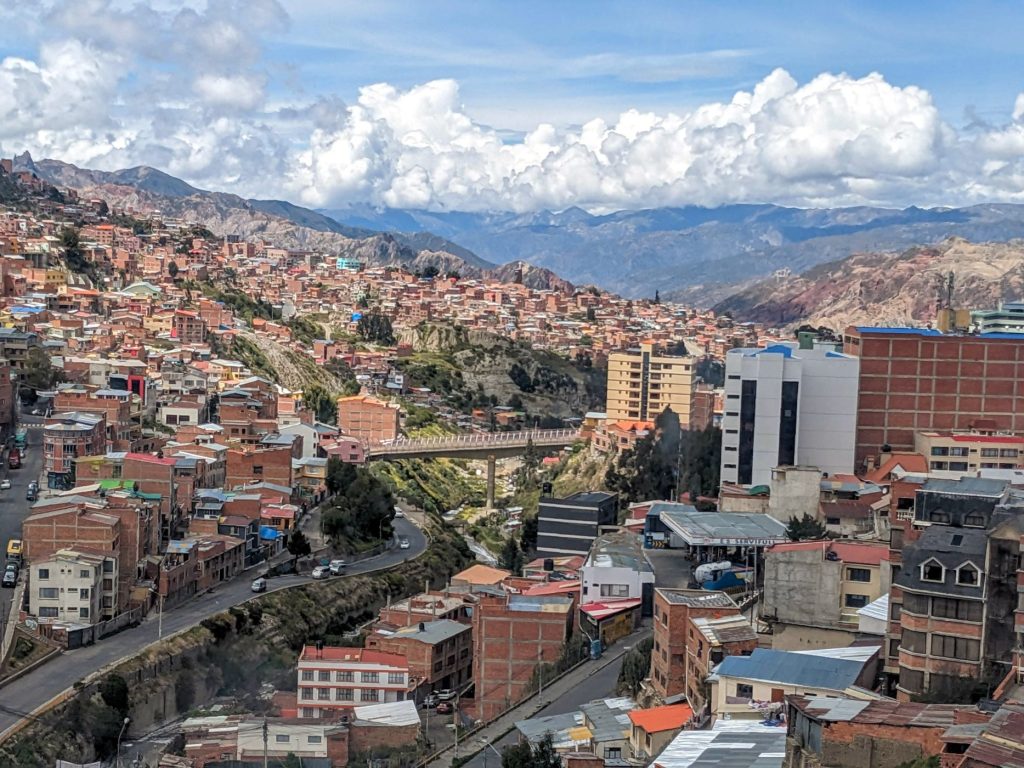
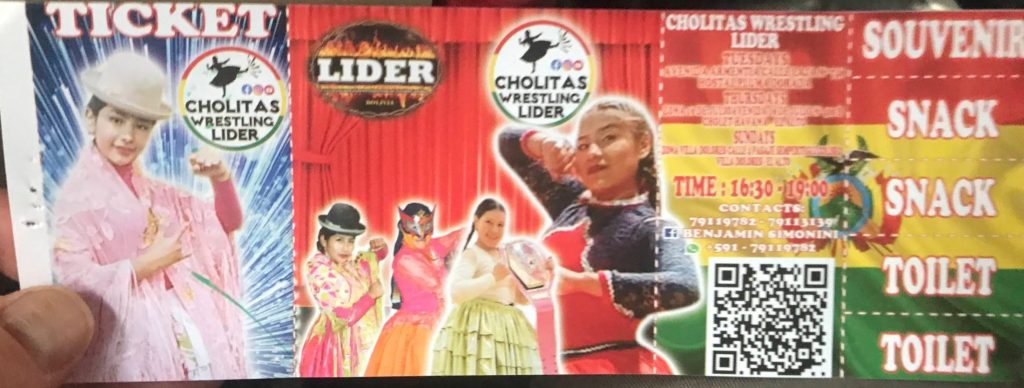
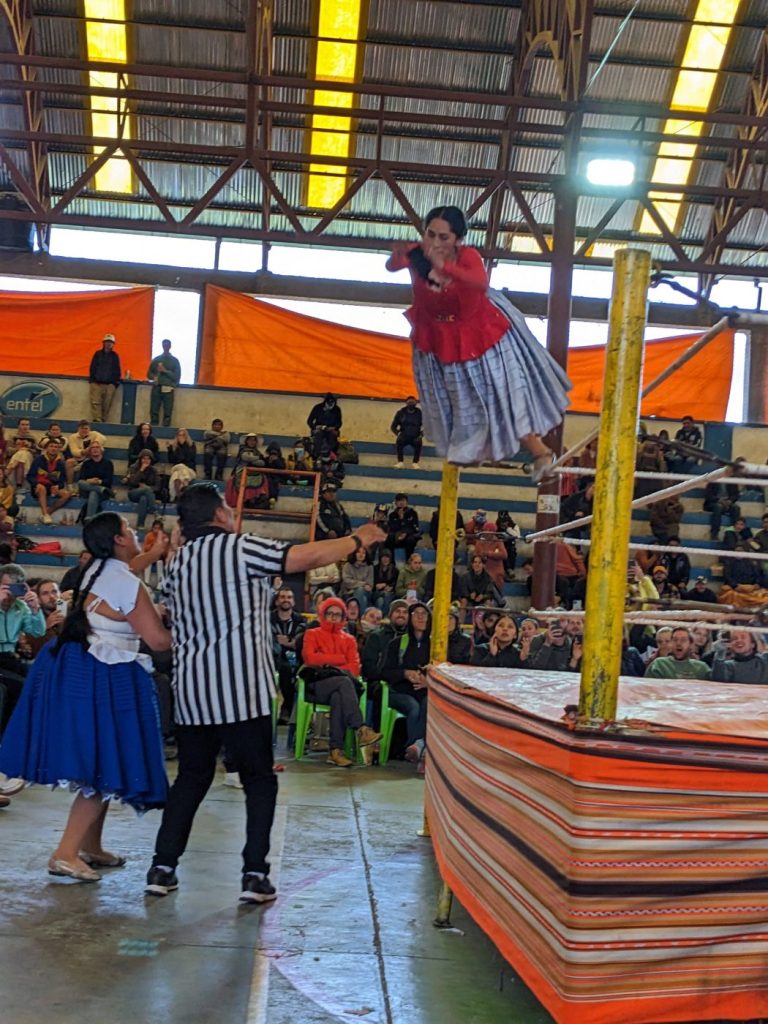
Day 4 – Day Trip to Lake Titicaca
Our day trip to Copacabana, Lake Titicaca and Isla del Sol was both magnificent and exhausting. Lake Titicaca is the highest navigable lake in the world. Isla del Sol, a short boat ride from Copacabana on the lake’s shore, is where, according to mythology, the sun god created the first Incans. It is a beautiful remnant of history, with it’s terraced slopes and pre-Columbian ruins.
Getting there, however, required a series of transfers: trufi to ferry to boat and back again by bus. It was a long day, especially for the kids.
Should you be so lucky as to visit Isla del Sol, my advice is to stay overnight at a minimum. They have a cute village at the top of the hill with inns and restaurants. It will be a day well spent to explore the island and complete the round trip at a more relaxed pace. As it is, we only got to spend an hour on the island, which was just enough time to climb up to the village and immediately turn around and head back to the boat.
And that is all I will say for now. The details of that trip will be compiled in another post.
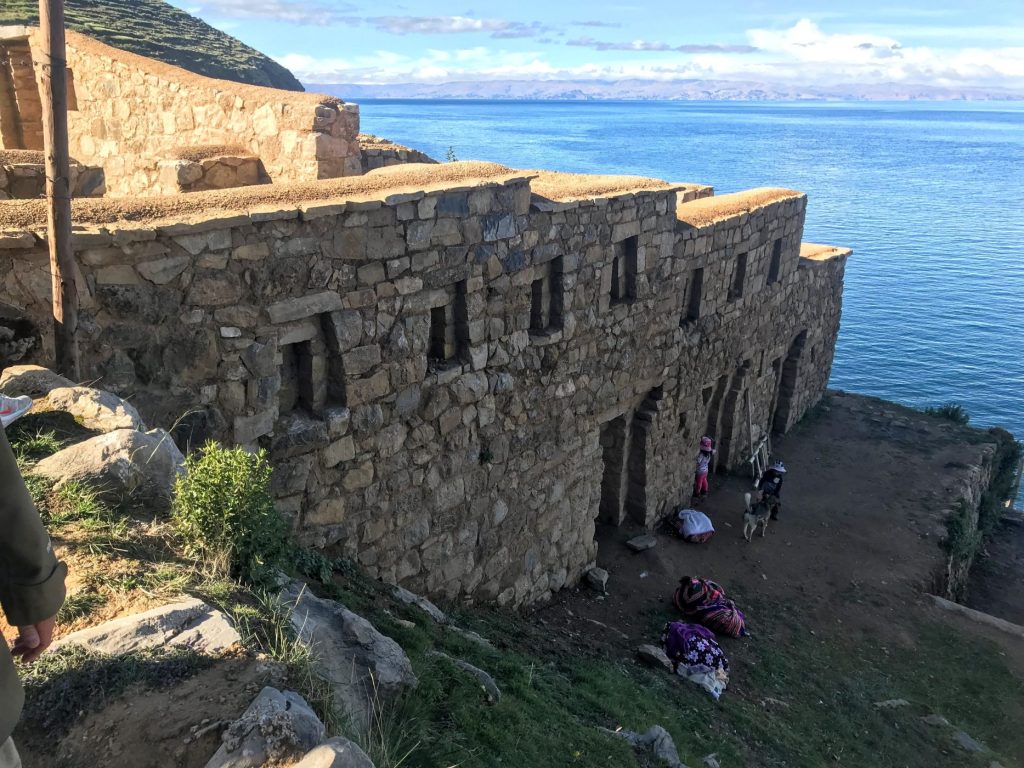
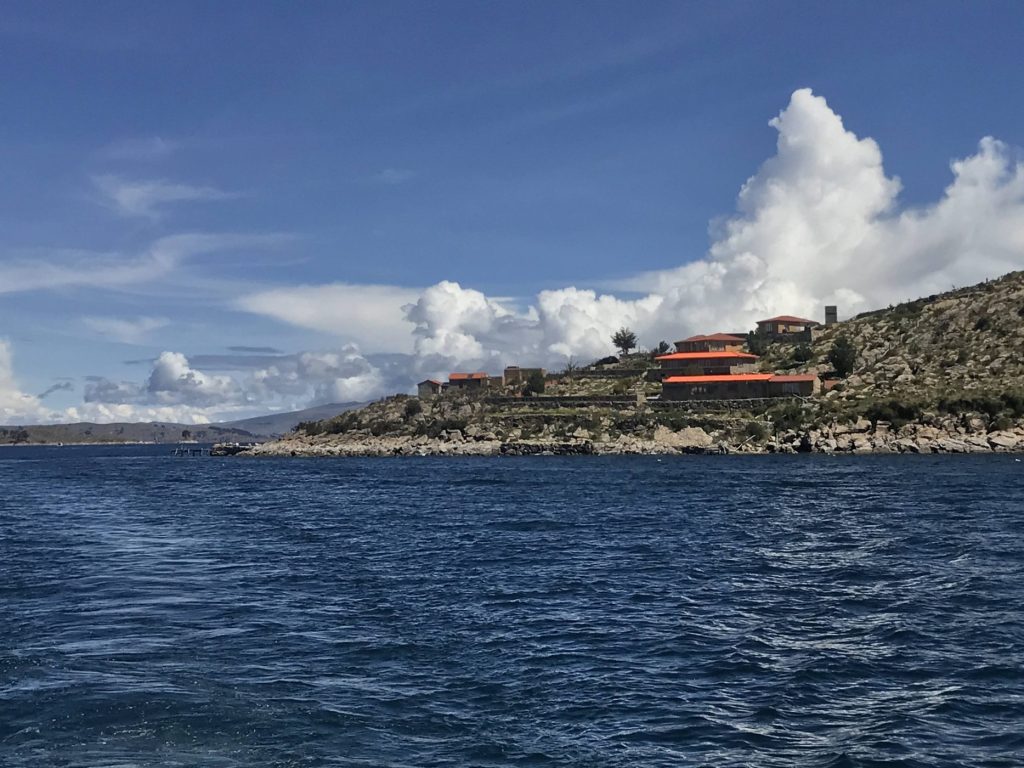
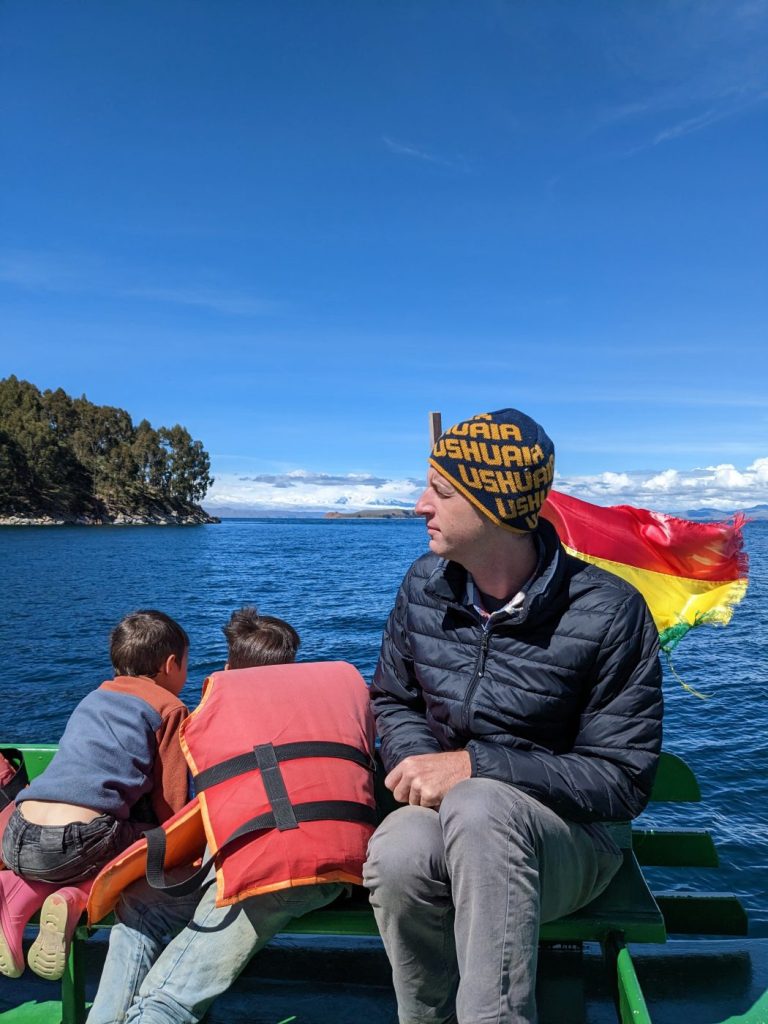
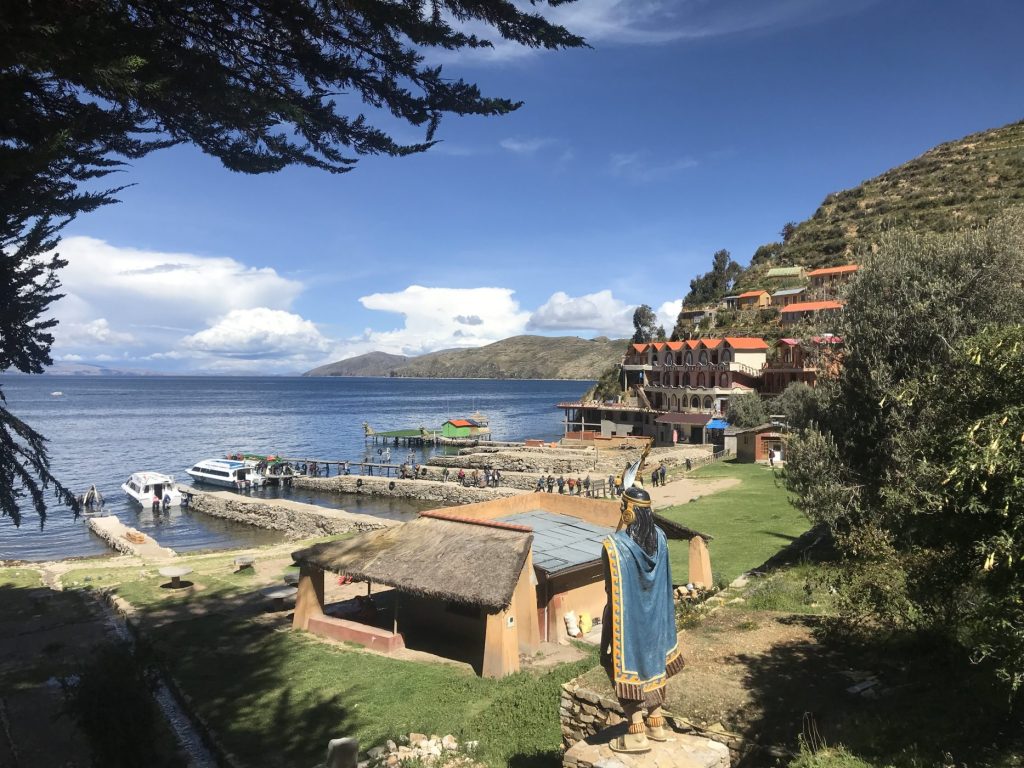
Day 5 – An 11-Course Meal (Without the Kids)
Actually, when I suggested that we went to La Paz only for the airport, that wasn’t entirely true. Liuan has a friend who grew up in La Paz as a missionary kid. Her parents still live there. We connected with them ahead of time. They invited us to their home and even offered to watch our kids while we went out on a date. Boo-yah!
Their neighborhood was in the Valley of the Moon, named for the distinctive bare rock cliffs that wall it off from the rest of the city.
Though we could have gotten there quicker by taxi, we took the cable cars. After all, we still had three more lines to complete to boast that we had ridden all the colors. We took the green line as far as it would go which took us to the edge of the Valley.
After so many hours floating above the city, we started making socio-economic observations. You each neighborhood’s status by the style of construction. The poorest (i.e. most of the city) lived in structures made of plain orange blocks. A smooth coat of painted cement was an unnecessary luxury.
Only in the wealthier districts did they spend on style and presentation. As we drew near to our acquaintances’ house, we passed over mansions with walls of glass and rooftop swimming pools. Every country has its one percent.
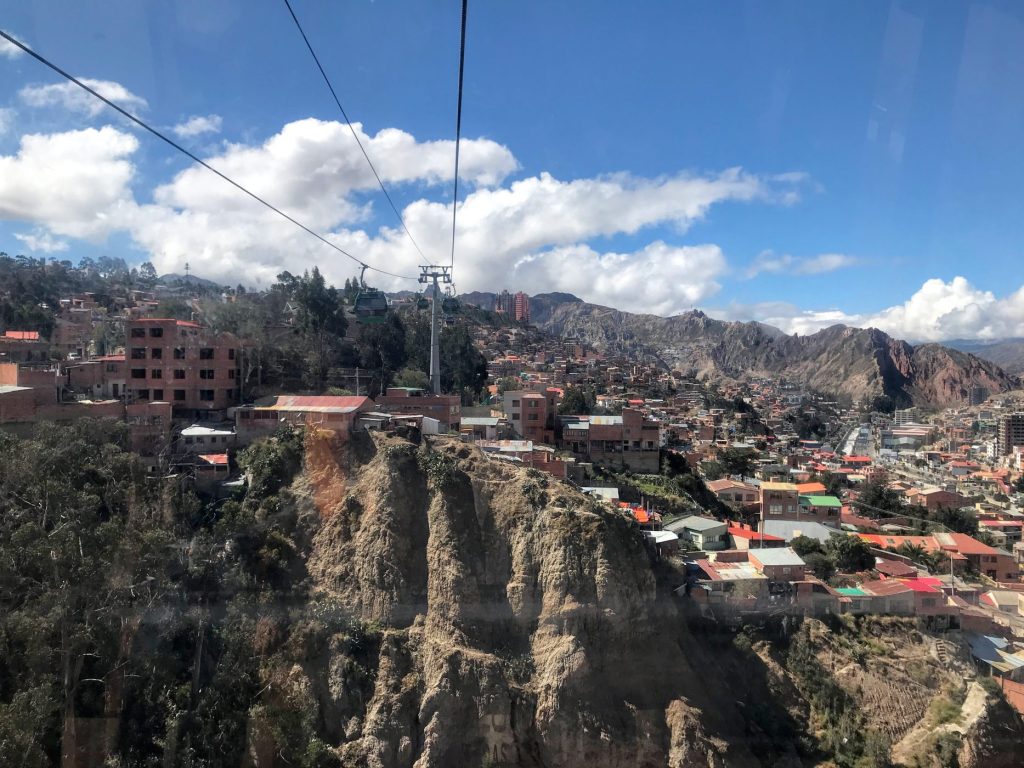
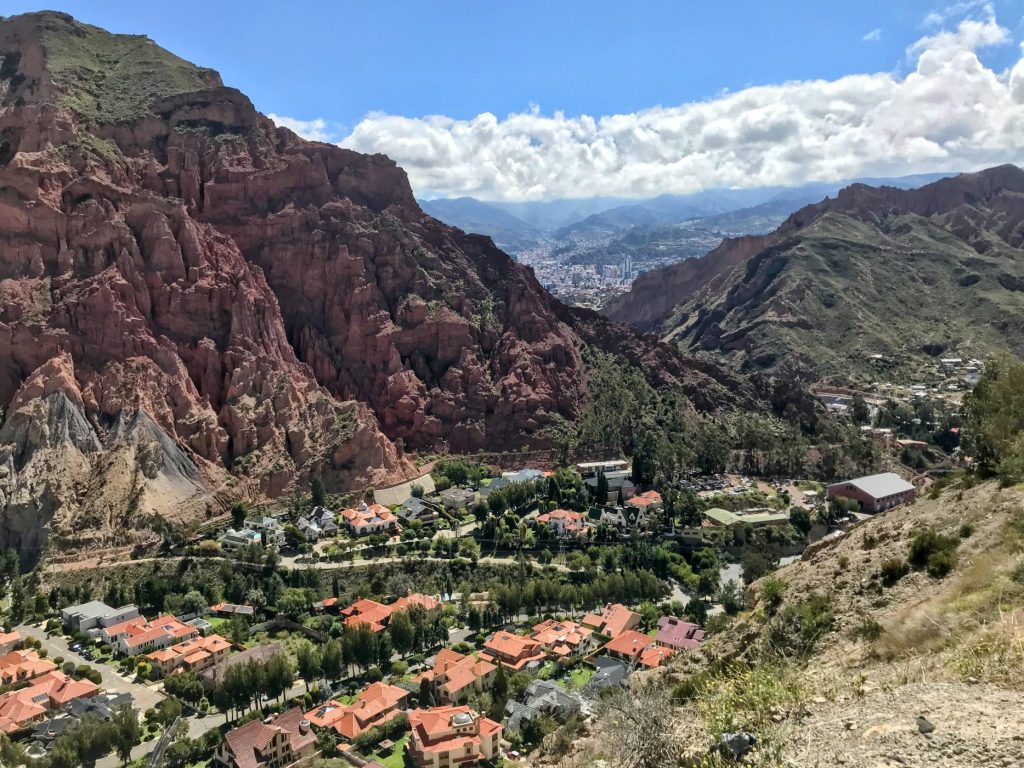
Our friends’ house wasn’t a mansion. By U.S. standards it was a warm but modest home. It was clean, bright, and tastefully put together with stained wood cabinets, wood beams, and a rounded archway. The house was filled with the unnecessary frills that we nevertheless take for granted in wealthier countries.
Compared to the typical Bolivian abode, it felt out of place. It was as if a tornado (or a thousand helium balloons) had torn an American home from its foundation and dumped it in the land of Oz—or somewhere just as strange—a moonscape on the edge of a city where women in skirts wrestled on Sunday nights.
The boys loved it. Their babysitters reminded them of Grandma and Grandpa and spoke American English. They played with Thomas the Train sets and Legos in a house that felt like home. It was an unexpected oasis for them, a sudden break from Latin America.
After getting to know our new friends, we left for our own oasis—a fancy meal without the kids. Liuan did her research and picked Gustu, quite possibly the finest restaurant in La Paz. It was finer than any dining experience we have ever had. We didn’t chow down on a meal; we appreciated fine art. It was expensive, but for what it was probably a steal—only within our price range in a country where a typical lunch menu costs $2. Gotta live while you can.
On our way back to the hotel, we rode the Cafe and Orange cable car lines. With that, we had ridden all of them.
In the evening we ate at a hole-in-the-wall Marrakesh restaurant. We settled in for two hours of sleep, and then took a midnight taxi to the airport for our flight to Colombia.
